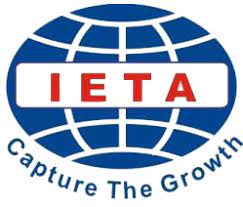Propp morphological analysis on Ready Player One novel: An attempt at defining sci-fi fiction
 ),
), (1) Universitas Dharma Andalas Padang
 Corresponding Author
Corresponding Author
Copyright (c) 2022 Lingua Didaktika: Jurnal Bahasa dan Pembelajaran Bahasa
DOI : https://doi.org/10.24036/ld.v16i2.117175
Full Text:
 Language : en
Language : en
Abstract
As a genre, science fiction is still in its defining stage. This happens because of the nature of science fiction which adopts story outlines from other fiction subgenres. The adoption of this story outline result in wide variations of stories that are considered as science fiction. In the midst of this wide variety of science fiction, the question of whether science fiction has its own narrative is one of the questions that arise in the discussion of defining science fiction as a genre. This study is aimed at providing additional discourse at defining science fiction, especially discourse related to this question and identifying the relationship between fairy tales and science fiction. The study was conducted on the narrative structure of the science fiction novel Ready Player One (RPO). The study was conducted using the Propp’s fairy tale morphology theory. By adapting the method used by Propp in mapping the morphology of Russian folk tales, the functional structure of the RPO story is extracted, classified by its moves and arranged in a story scheme. The result of the analysis on the one hand shows that structurally there is no peculiarity of the narrative structure of RPO, excepts the exchange of sequences of several functions. On the other hand, this reveals the similarities in the narrative structure between fairy tales and science fiction RPO which is then interpreted as a form of connection between fairy tales and RPO as a science fiction.
Keywords
References
Aguirre, M., & Ardoy, E. (2009). Narrative Morphology in Barbauld’s Sir Bertrand : A Fragment The Northanger Library Project. The Northanger Library.
Ahmadi, A., Rezabeigi, M., Piri, F., & Bajelani, M. R. (2013). A morphological reading of Bizhan and
Manizheh based on Vladimir Propp narrative theory. Journal of Language Teaching and Research, 4(5), 986–993. https://doi.org/10.4304/jltr.4.5.986-993
Aronstein, S., & Thompson, J. (2015). Coding the Grail: Ready player one’s Arthurian mash-up. Arthuriana, 25(4), 51–65. https://doi.org/10.1353/art.2015.0045
Arvidsson, A. (2005). Vladimir Propp’s fairy tale morphology and game studies (Computer Games as Fiction and Social Interaction). https://www.diva-portal.org/smash/get/diva2:156802/FULLTEXT01.pdf
Bordwell, D. (1988). ApProppriations and ImPropprieties: Problems in the Morphology of Film Narrative. Cinema Journal, 27(3), 5. https://doi.org/10.2307/1225288
Bulan, R. L. (2018). A proppian model of the heroine’s journey implied in Carrie Vaughn’s Bannerless. Diponegoro University.
Cline, E. (2011). Ready Player One. Crown Publisher.
Cofer, G., Shirk, D., Dally, D., Meadows, S., & Magid, R. (2018). Three keys to creating the world of Ready Player One visual effects and virtual production. ACM SIGGRAPH 2018 Production Sessions, 1–1. https://doi.org/10.1145/3233159.3233168
Condis, M. A. (2016). Playing the game of literature: Ready player one, the Ludic novel, and the geeky “canon” of white masculinity. Journal of Modern Literature, 39(2), 1–19. https://doi.org/10.2979/jmodelite.39.2.01
Drout, M. D. C. (2006). From here to infinity: An exploration of science fiction literature (D. F. Carnahan (Ed.)). Recorded Book, LCC.
Hamim, S. (2020). The inseparable narratology and genre in Disney’s Aladdin (2019): A Structuralist Criticism. Klausa, 4(1), 11–32. https://doi.org/https://doi.org/10.33479/klausa.v4i01.276
Hellystia, D., & Hasan, H. (2021). Narrative functions in Burton’s Sleepy Hollow movie. Vivid: Journal of Language and Literature, 10(1), 31–40. https://doi.org/10.25077/vj.10.1.31-40.2021
Ihsan, P., & Wijayadi. (2015). The Sleeping Beauty Fairy Tale : An Analysis On Propp’s The Functions of Dramatis Personae. TELL Journal, 3(1), 85–95.
Lahlou, K. (2017). An attempt at applying Vladimir Propp’s Morphology of the Folktale on Charles Dickens’s Great Expectations. Arab World English Journal For Translation and Literary Studies, 1(3), 106–120. https://doi.org/10.24093/awejtls/vol1no3.8
Marlia, M., Puspasari, A., & Hikmahyanti, C. (2017). Character analysis in the movie Alice Through the Looking Glass based on Propp’s theory. Jurnal Ilmiah Bina Bahasa, 10(2), 25–36. https://doi.org/https://doi.org/10.33557/binabahasa.v14i01
Mendlesohn, F. (2003). Introduction: Reading science fiction. In E. James & F. Mendlesohn (Eds.), The Cambridge Companion to Science Fiction (pp. 1–12). Cambridge University Press.
Moberly, K., & Moberly, B. (2016). Gay habits set straight: Fan culture and authoritative praxis in Ready Player One. The Year’s Work in Medievalism, 31, 30–44.
Nordstrom, J. (2016). A pleasant place for the world to hide: Exploring themes of utopian play in Ready Player One. Interdisciplinary Literary Studies, 18(2), 238–256. http://www.jstor.org/stable/10.5325/intelitestud.18.2.0238 Accessed:
Propp, V. (2009). Morphology of the folktale (L. A. Wagner (Ed.); 2nd ed.). University of Texas Press.
Prucher, J. (Ed.). (2007). Brave new words : The Oxford dictionary of science fiction. Oxford University Press.
Roberts, A. (2016). The history of science fiction (2nd ed.). Palgrave Macmillan UK. https://doi.org/10.1057/978-1-137-56957-8
Setyandari, H. M. (2018). Analysis of Ray Bradbury ’ s Fahrenheit 451 Within Propp ’ Model of Narrative Theory.
Sveinsdóttir, A. M. (2015). Fairyland remains the same: A Proppian analysis of Harry Potter and the Sorcerer’s Stone [University of Iceland]. In Skemman. https://skemman.is/handle/1946/21166
Vučković, D., & Bratić, V. (2020). Propp revisited: A structural analysis of Vuk Karadžić’s collection Serbian folk fairy tales. Zeitschrift Für Slawistik, 65(3), 335–367. https://doi.org/10.1515/slaw-2020-0017
Wama, T., & Nakatsu, R. (2008). Analysis and generation of Japanese folktales based on Vladimir Propp’s methodology. 2008 First IEEE International Conference on Ubi-Media Computing, 426–430. https://doi.org/10.1109/UMEDIA.2008.4570929
Yanti, P. G., & Zabadi, F. (2016). A comparative study of Indonesian fairy tales structure. Rupkatha Journal on Interdisciplinary Studies in Humanities, 8(3), 252–261. https://doi.org/10.21659/rupkatha.v8n3.26
 Article Metrics
Article Metrics
 Abstract Views : 654 times
Abstract Views : 654 times
 PDF Downloaded : 212 times
PDF Downloaded : 212 times
Refbacks
- There are currently no refbacks.
Copyright (c) 2022 Lingua Didaktika: Jurnal Bahasa dan Pembelajaran Bahasa

This work is licensed under a Creative Commons Attribution-NonCommercial 4.0 International License.









